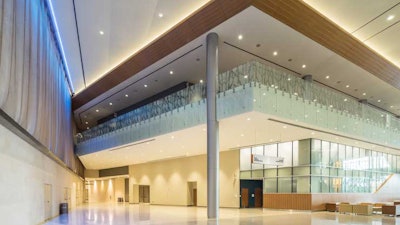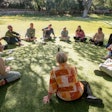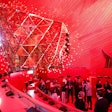
The $110 million Charlotte Convention Center expansion won’t debut until next summer, but it’s already lined up at least seven conferences, symposiums and expos for 2021 and 2022, thanks to plans that call for more smaller meeting spaces.
The project will add 50,000 square feet of additional meeting rooms and pre-function areas, bringing the total number of spaces for individual breakout sessions up from 37 to 54. In some cases, the events wouldn’t have come to Charlotte without the extra rooms, says Mike Butts, Visit Charlotte’s vice president of sales and executive director. In other cases, the new space was a contributing factor to the organizations’ decision to host an event there.
The project comes three years after Charlotte leaders studied why the center wasn’t landing more business, especially as the city’s hotel room inventory grew. “That’s when it became clear that many of our larger groups needed more smaller breakout rooms,” Butts says.
Charlotte is far from alone in its plans to build more meeting spaces. Changes to the way meetings are programmed and expectations of attendees are driving the need for extra room for networking and breakout sessions at convention centers, especially in mid-market, second tier cities, says Adam Paulitsch, an associate principal with Populous, a global design firm.
“It’s less about trade show and floor space, there’s an absolute premium on smaller, more intimate space to sell in the convention center,” Paulitsch says.
Shorter Sessions, Lots of Collaboration
Even before COVID-19, meeting planners and conference-goers are demanding different experiences that include not just big exhibit halls and 1,000-seat plenary sessions, but opportunities to work in much smaller groups and even unplug from the crowd.
In a survey of meeting planners about how younger generations are influencing meeting formats, IACC’s Meeting Room of the Future report found that 76% agree that shorter attention spans require more interaction and collaboration and 70% say shorter, quicker sessions are replacing long-form ones.
It’s not just millennials expecting a different experience. “I think we’ve all learned that whatever generation you are, you are going to learn and retain and contribute more in shorter sessions,” says Mark Cooper, CEO of IACC.
Work Smarter
In Texas, city officials are in the early stages of discussing a possible expansion of Austin Convention Center. But Paul Barnes, the center’s chief operating officer for events and operations, said they’ve already reconfigured parts of the existing building to provide more space for smaller meetups. A few years ago, they converted rooms that once held pay phones into lounges and room for collaboration.
“There’s a greater emphasis on continuing education modules and, with that programming, the smaller space is becoming more important,” Barnes says.
Paulitsch worked as a project designer for a major expansion of the Henry B. González Convention Center in San Antonio. When it opened in 2016, it had twice the amount of meeting space as before. But Paulitsch cautions convention center leaders that just adding more meeting space isn’t enough. Not only did the San Antonio project add more space, it also focused on adding natural light and offered innovative design elements. One room is cantilevered over the road, has glass on three sides and provides a view of San Antonio.
“It truly is about designing space that’s unique to that city and unique to that market,” Paulitsch says.



















